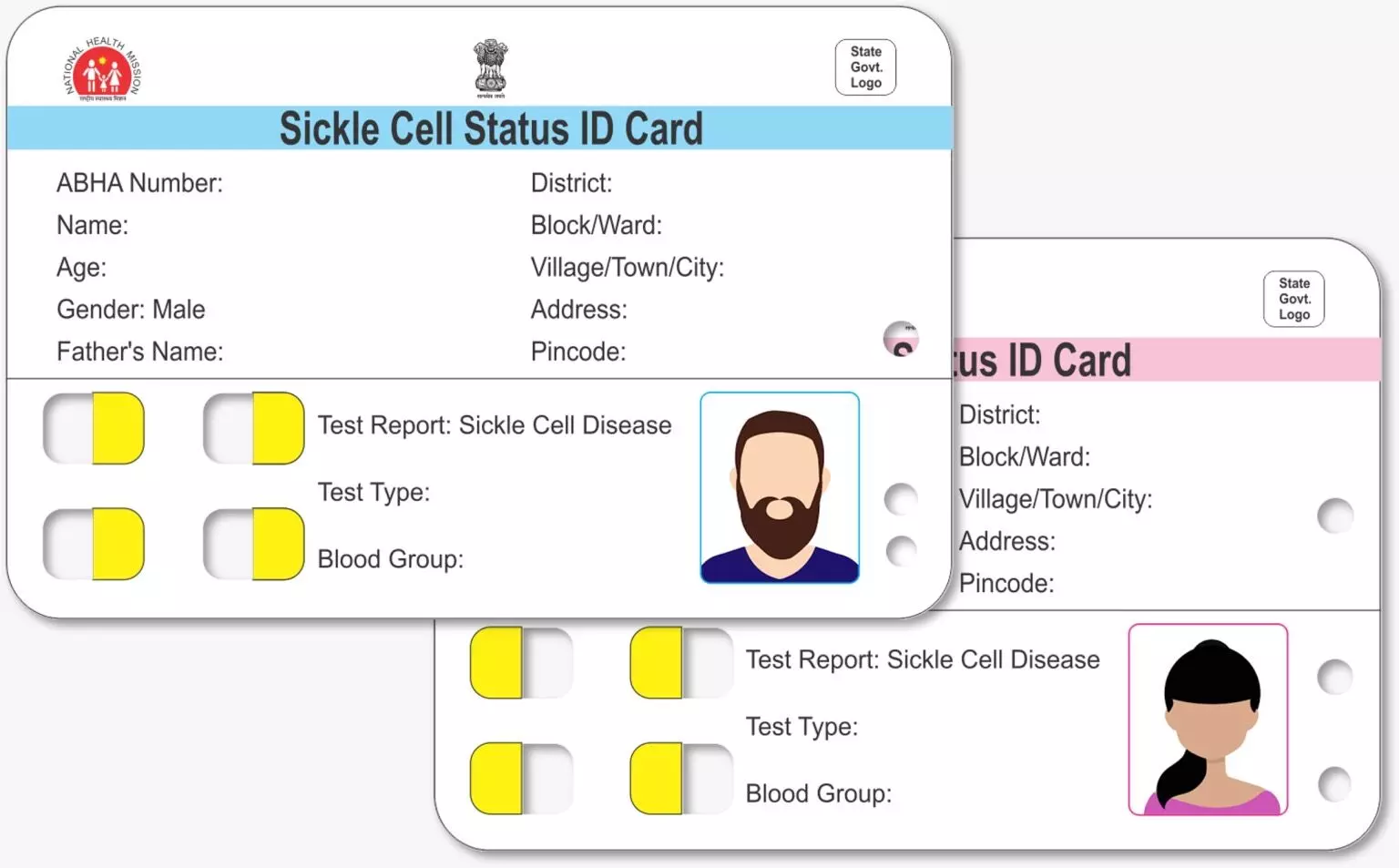World Sickle Cell Day: Over 3 crore Indians screened, 1 crore ID cards distributed since 2023
Over a crore Sickle Cell Status ID cards have been distributed by the central government in its prevention program
By Neelambaran A
Hyderabad: Over a crore of Sickle Cell Status ID cards have been distributed, the Union government declared regarding the National Sickle Cell Anaemia Elimination Mission that began last year.
The distribution of IDs – 1,12,01,612 in total – involved the screening of more than 3 crore individuals (3,39,77,877) for sickle cell anaemia.
In addition, in connection with World Sickle Cell Day, observed on June 19, the Union Ministry of tribal affairs held 15,000 camps, screening 1.53 lakh people and counselling 4.56 lakhs through the two-week-long awareness program.
What are thalassemia and sickle cell disease?
Thalassemia and sickle cell disease are genetic blood diseases which require lifelong treatment. Frequent blood transfusion, chelation therapy and bone marrow transplant are the treatment methodologies followed.
The prevention of the diseases is garnering more attention given the fact that around 10,000 to 15,000 babies are born with thalassemia in India. Further, the prolonged period of receiving treatment increases the financial burden on the families.
Sickle cell anaemia is prevalent among people of lower socio-economic status, with the tribal population accounting for more cases.
National outreach
The government announced that it has also organised 44,751 events nationwide covering 17 States and 343 districts under the National Sickle Cell Anaemia Awareness Day.
As many as 6,15,806 individuals were screened for sickle cell disease and 2,59,193 Sickle Cell Status ID cards were distributed to the beneficiaries.
The Thalassemia and Sickle Cell Society in Hyderabad has urged the governments to include thalassemia awareness to eradicate the two genetic blood diseases.
Causes and symptoms of thalassemia and sickle cell disease
Thalassemia and sickle cell disease are mostly inherited from the parents. Thalassemia is caused when a gene involved in the generation of haemoglobin has some abnormality resulting in lower haemoglobin than normal.
Sickle cell disease affects the actual round shape of the red blood cells, making them look like sickle or crescent moon shapes, thus reducing the flow of blood.
The symptoms of both diseases remain more or less the same, including fatigue, paleness, swelling of hands and feet, vision problems, and slow growth among others.
Costly lifelong treatment required
The prevailing treatment for genetic blood diseases includes frequent blood transfusions, medications and bone marrow transplants.
Dr Chandrakant Agarwal, the president of the Thalassemia and Sickle Cell Society in Hyderabad said, “The blood transfusion has to be done once in every 15 to 20 days. Our society provides free treatment and medications including bone marrow transplant for free with CSR funds from Bajaj Electricals.”
Continuous treatment and medication can result in iron deposits in the heart, brain and kidneys of the patients. Adequate medicines are available to remove the deposits to avoid further implications.
A bone marrow transplant costs around Rs 15 to 20 lakhs, beyond the reach of the large section affected. “For those patients who have an unmatched family or unknown donor, a risky procedure called the haplo transplant has to be performed,” Dr Agarwal said.
Preventive measures play a key role in eradication
With medications and transfusions being the only lifelong options, experts are pushing for prevention through early diagnosis.
Since the diseases are genetically transmitted from parents to children, prevention becomes more crucial than curing.
Pregnant women must get regular screenings
“The pregnant women must be tested for HBA2 during the first trimester to identify the possibility of the foetus being affected with thalassemia and sickle cell disease. We are urging the government to issue a government order to conduct the test in all hospitals,” Dr Agarwal said.
Testing the parents to check whether they are carriers of the disorders is the first step in the prevention process. If one of the parents is a carrier, the child could suffer from thalassemia minor, while if both the parents are found to be carriers, the child would be affected by thalassemia major.
Dr Agarwal added: “Such patients are provided counselling, explaining the problems with thalassemia major and they are given the option to terminate the pregnancy considering the risks involved. The prenatal diagnosis is vital to prevent these diseases.”